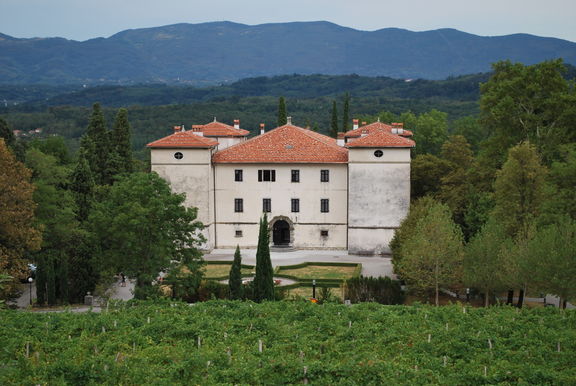Difference between revisions of "Goriška Museum"
(imported from XML by extractor/importer) |
m (Text replace - "{{Abstract" to "{{Teaser") |
||
| Line 19: | Line 19: | ||
}} | }} | ||
| − | {{ | + | {{Teaser| |
The beginnings of institutionalised museum activities in Goriška go back to 1861, when Goriška Provincial Museum was founded in the region's centre Gorica-Gorizia, now in Italy. Its collections presented various remains of the region's past without paying attention to individual ethnicity. Exhibitions organised in that period also carefully avoided all references to the presence of Slovenes in the region. The plan to found a national museum in Goriška, advanced in the early 20th century, was thwarted by the First World War and the collected material was lost. During the Italian occupation of Primorska the idea of establishing a school museum here also had to be abandoned. | The beginnings of institutionalised museum activities in Goriška go back to 1861, when Goriška Provincial Museum was founded in the region's centre Gorica-Gorizia, now in Italy. Its collections presented various remains of the region's past without paying attention to individual ethnicity. Exhibitions organised in that period also carefully avoided all references to the presence of Slovenes in the region. The plan to found a national museum in Goriška, advanced in the early 20th century, was thwarted by the First World War and the collected material was lost. During the Italian occupation of Primorska the idea of establishing a school museum here also had to be abandoned. | ||
}} | }} | ||
Revision as of 20:06, 26 November 2009
-
21 Jan 2018
The exhibition The stamp of Keltic horses' hoofs curated by Miha Mlinar (Tolmin Museum) and Teja Gerbec (Goriška Museum), where the findings from the Bizjak's Homestead in Kobarid and from the Kamenjača in Breza next to Sarajevo are featured together,
-
to
1 Jul 2011
15 Sep 2011
With a Fibula into Fable exhibition organised by Koper Regional Museum, Sergej Mašera Maritime Museum, Goriška Museum, Tolmin Museum, Ptuj – Ormož Regional Museum, and Notranjska Museum, Postojna
The present museum came about as a a result of conditions after the Second World War, when the new state border between the then Yugoslavia and Italy placed the town of Gorica-Gorizia in Italy and the remaining part of the Goriška region which had previously gravitated towards the town was left without a focus. To replace what was lost, a study library and district museum were established in the fast-growing town of Nova Gorica.
Goriška Museum was founded in 1952, initially within the primary school of Solkan. In 1955 it was moved to the restored Renaissance-style Kromberk Castle, an early 17th-century reconstruction of a fortress erected in the first half of the 13th century by Count Henrik of Dornberk. The Trenta Lodge TNP Information Centre and Museum and various other small museums joined the Goriška Museum in 1958, and in the following years the activities of the Goriška Museum spread to the upper Vipava Valley and the Karst, where additional museum collections were arranged.
The two permanent exhibitions in Kromberk Castle are the Gallery of Older Art and the Gallery of 20th-century Artists from Primorska; the other two are the cultural history collection and the lapidary collection in the castle park. The museum also has its own library and manages the Avgust Černigoj Gallery, Lipica, Dobrovo Castle, Lojze Spacal Gallery and the Karst House, Štanjel, the Museum Collection of the Soča Front at Sveta Gora, Trenta Lodge TNP Information Centre and Museum, and the Villa Bartolomei Museum Collection.



